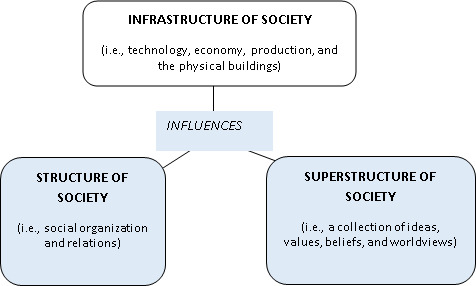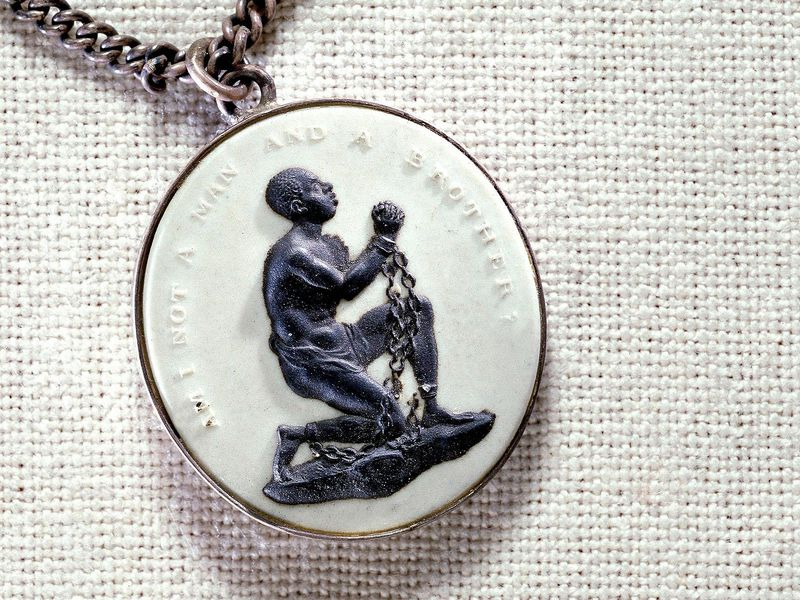Anthropology
Schools Of Thought And Big Ideas
MINDS ON
Watch or listen to this video.
 Feelings Across Cultures
Feelings Across Cultures
What are your initial responses? Capture:
3 Thoughts or Ideas
2 Questions
1 Image that captures or symbolizes the essence of the video.
ACTION
Schools of Thought
Two questions will guide this activity: 'How can the different schools of thought in anthropology be used to understand people and how they interact in different cultural systems?' and, 'Why is it important to study cultural systems and archeological remains from different times and places?'
If you reach back into the psychology and sociology units that you studied, you might remember that each discipline can be divided into specific schools of thought. Just like psychology and sociology, anthropology can also be divided into different schools of thought. Let’s take a look at a few specific examples.
Schools of Thought in Anthropology
Functionalism
Functionalists believe that different social institutions (i.e., family, school, peers, religion) in society (and culture) all work together to provide a stable environment in which people can live. Functionalists study how these institutions function socially by asking certain questions such as these: 'What is the purpose of these social institutions?', 'How are they run?', 'How are decisions made?' and, 'How do they work together?'
For example, Functionalists would say that the medical element of culture (e.g., doctors, traditional healers, shaman) exists to help people deal with well-being issues and physical needs, and the legal (law) element of culture reinforces the behaviours that are culturally defined as acceptable.
Some cultures may seem ‘different’ to the outsider looking in and observing them (think about the ‘Nacerima’ culture!). However, Functionalists believe that all societies are normal and logical (definition:reasonable)because they are composed of the different social institutions that work together to meet the needs of the majority of the people.
Structuralism
The next video clip that you’ll watch or listen to contains different keywords. Knowing what the keywords mean will help you to understand the material better. For example, do you know what 'reconciliation' and 'manifestation' mean?
Reconciliation is the action of making one view or belief compatible with another. That is, understanding how the two sides relate to each other.
Manifestation refers to an event, action, or object that clearly shows or embodies something. When something manifests, it presents itself.
Now that you’re familiar with those words, watch or listen to this video to learn about Structuralism as an anthropological school of thought:
Structuralism.
Task:
Complete this short quiz to check your understanding of Strauss’s theory of Structuralism.
School_of_Thought_Quiz
Now watch or listen to this video:
 Happiness
Happiness
What do you think a structuralist would say about this video? Why do you think the artist created this video?
Cultural Materialism
The theory of Cultural Materialism was first introduced by Marvin Harris in 1968. This theory suggests that the infrastructure of society (technology, economic production, the social institutions or buildings) influences both the structure of society (i.e., social relationships and social organization), and its superstructure (the collection of ideas, values, beliefs, and relations).
Here’s a diagram to help you visualize the connection between society's infrastructure, structure, and superstructure.

Harris thought that to understand a culture you have to consider all of the elements - its infrastructure, structure, and superstructure. For example, cultural products, such as art and consumer goods that are made, reflect how these elements of the culture are interrelated. So, a cultural product (e.g., videos, art, poetry) is really a meaningful reflection of these interactions.
Cultural materialism can be used as a lens through which to study other cultures, as well. For example, if anthropologists studied a cultural product, considered when in history it was made, and how it fit within the structures, it could tell them a lot about the culture itself (law, art, politics, religion, values, beliefs, etc).
Let’s consider an example of cultural artefacts that can be used to tell us about a society or culture.
Choose one of these two images to analyse.


 Cultural Artefacts
Cultural Artefacts
Use cultural materialism as a research method here by answering these two questions:
- When in history do you think these artefacts were made? What makes you say that?
- What might these artefacts say about the culture, itself (consider law, art, religion, social relationships, values, beliefs, etc.)?
Why study cultures from the past?
A very significant question remains - why should we study other cultural systems today, as well as those from other times?
To help us start thinking about that question, let’s take a metacognitive (definition:awareness and understanding)moment to reflect on your learning so far.
At this point, what have you learned about anthropology that you think is important to remember? Write your ‘big idea’ in a bubble and share it with your teacher and peers by adding it to the class Mind Map. (You may want to elaborate on a peer’s bubble, too!)
Your ‘big ideas’ have begun to capture why studying different cultures of today and yesterday is important.
The goal of anthropology is to understand the human condition - what happened in the past, what’s happening now, and what might happen in the future. Because anthropology is a ‘holistic’ study of humans (i.e., biological, cultural, and social) this interconnected approach helps us to understand each other, and hopefully, to live together in peace and harmony (definition:agreement)one day.
Take a moment to watch or listen to this short clip of anthropology professor, Dr. Ken Guest, explaining why, in his opinion, cultural anthropology may be the ‘most important’ class students will or can take in their educational careers.
Physical Anthropology
At this point, you’ve reflected on your learning about anthropology from a cultural sense, so let’s consider the importance of physical anthropology - why is it important to study human physical remains?
Biological anthropologists study physical aspects of human life to appreciate issues that bring attention to social justice, status, health, and equality amongst humans.
How could studying physical remains help us appreciate and understand each other? Let’s consider an example.
Have you ever heard of a ‘Body Farm?’ It’s a term that is used to describe a Forensic Anthropology Research Centre. Some people choose to donate their bodies to research after they pass away. Researchers at Body Farms will use the donated corpses (definition:dead bodies)to conduct research.
Watch or listen to this video clip to learn more. NOTE: Some images in this video may be disturbing.
Stop and connect: You’ve read before that all anthropologists benefit from learning about each other’s studies. This example gives us an opportunity to appreciate that point.
How could cultural and physical anthropologists help each other’s work by sharing their knowledge about topics?
For example, would the idea of a ‘Body Farm’ be accepted in all cultures? Can you think of an example of a culture where, maybe for religious reasons, people may not choose to donate their bodies to research? Perhaps the death rituals you learned about would help you answer this question.
 Physical And Cultural Anthropologists
Physical And Cultural Anthropologists
These questions reflect the interplay or interaction between the different subfields in anthropology. Can you think of other questions that could be asked to show how physical and cultural anthropologists could learn from each other?
Hopefully at this point you are feeling more confident in appreciating why it’s incredibly important to study different cultures and (both) cultural and physical remains. However, what about the ethics (definition:moral principles that govern a person's behavior or the conducting of an activity)of it all? Is there a time when studying remains shouldn’t be allowed? And, who makes these decisions?
When is it okay to dig up the dead?
Read this article, When is it okay to dig up the dead? from National Geographic.
If you want to view any links in this pdf, right click and select "Open Link in New Tab" to avoid leaving this page. (View the original article.)
The article When Is It Okay To Dig Up The Dead? explores some very interesting ethical points in anthropology research, but it’s quite a long article. You must read or listen to:
- the first section of this article (up until the subheading “Grave Concerns”):
- the last section of the article “Why Do We Care;” and
- one other section of the article in between; either:
- The Druids Strike Back; or
- Holy Ground; or
- Next of Kin.
Of course, if you like, you can read the whole article!
 When Is It Okay To Dig Up The Dead?
When Is It Okay To Dig Up The Dead?
What do you think? When is it acceptable to dig up the dead? Or, is it? After you’ve read the article, select a piece of evidence (i.e., a sentence or two) from the article with which you agree or disagree.
(The article Richard III, King found under a parking lot, finally laid to rest describes an actual example of this!)